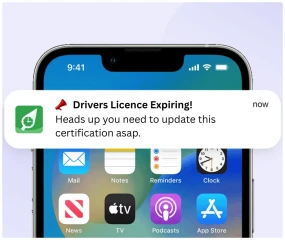Welcoming new employees: A human-centred approach
The way we welcome new members into our organisation is more than just saying hello and filling out forms. It's all about making them feel like an important part of the team and helping them start their journey with us. This unique way of bringing people on board is essential because it helps them feel comfortable and excited to work with us. It also makes them more motivated and productive and makes them want to stay with us for a long time.
As we dig deeper into the value of human-centred training, we see that it's not only about efficiency. It's about forming trust and respect. This fosters growth, creativity, and a profound feeling of belonging.
Understanding the human side of onboarding
Starting a new job can be a big deal for new employees. It's more than just doing paperwork and getting to know the office. It's about connecting with people and building solid relationships with coworkers. These things are super important to help everyone feel like they fit in immediately.

The impact of human connection
Human connection in the workplace plays a significant role in the onboarding experience. Employees who strongly connected with their team and managers during onboarding were likelier to stay with the company for up to three years.
Fostering interpersonal relationships
Ensuring new employees get along with the current team can make everyone happier and work better together. Having mentors, buddies, and regular meetings can help create these important bonds. These methods help new hires learn and grow and make the team stronger and more supportive.
Building a sense of workplace belonging
A sense of belonging at work keeps employees engaged and loyal. Studies say that when employees feel like they belong, they are more productive and less likely to quit. Creating an inclusive onboarding program that celebrates diversity can make a positive impact.
The role of emotional intelligence in onboarding
 skills, talents, and preferences.
skills, talents, and preferences.
Crafting memorable onboarding experiences

Creating personalised job offers and engaging candidates before their first day ensures excitement and appreciation. Effective strategies include:
- Personalised job offer communication: Customising job offers to fit candidates' skills shows care and increases acceptance rates and commitment.
- Welcome packs: Sending a welcome pack with company-branded items and culture info fosters enthusiasm.
- Pre-onboarding survey: Gathering new hires' preferences and interests helps customise their onboarding experience.
First day fundamentals

To make new hires feel welcomed and valued on their first day, consider these activities:
- Pre-arrival preparation: Prepare workstations with tools, technology, and a welcome pack.
- Warm welcome: Greet new hires personally to make them feel expected and valued.
- Office tour: Introduce new hires to key areas and colleagues to help them settle in.
- Team introduction: Arrange meetings for introductions and encourage informal interactions.
- First-day check-in: Meet at the end of the day to provide feedback and support.
- Social integration: Organise team lunches or breaks to foster rapport and belonging.
Measuring the success of your onboarding process
Evaluate the onboarding process's effectiveness using these methods:
- Employee surveys: Conduct surveys to gather feedback on clarity, training, and overall onboarding experience.
- Retention rates: Monitor retention rates to gauge onboarding success and identify improvement areas.
- Engagement levels: Use tools like Slack and Culture Amp to measure employee engagement and satisfaction.
- One-on-one meetings: Gather insights from new hires to refine the process and address concerns.
- Performance metrics: Assess new hires' productivity to determine training effectiveness.

By focusing on a human-centred onboarding experience, businesses can foster loyalty, motivation, and long-term success.



